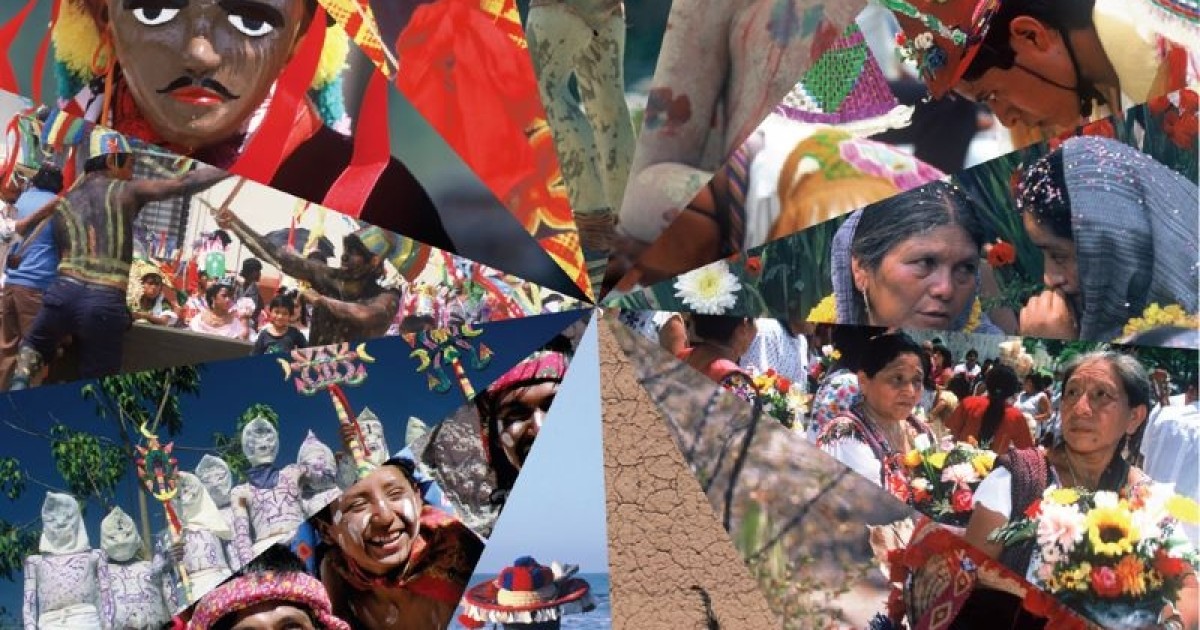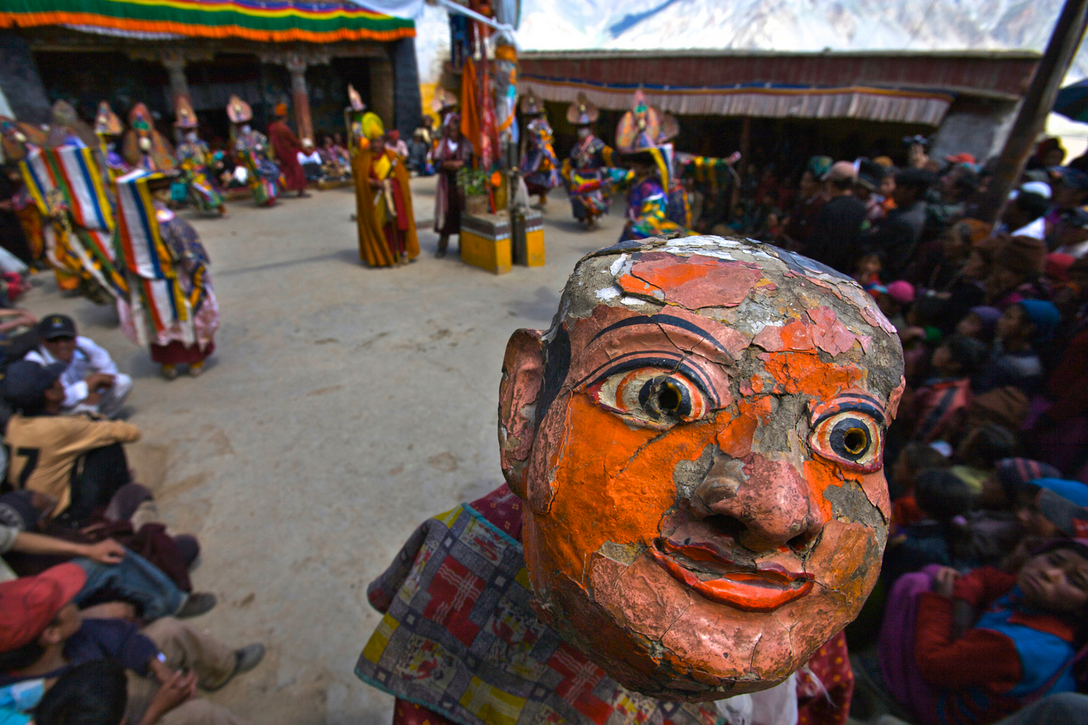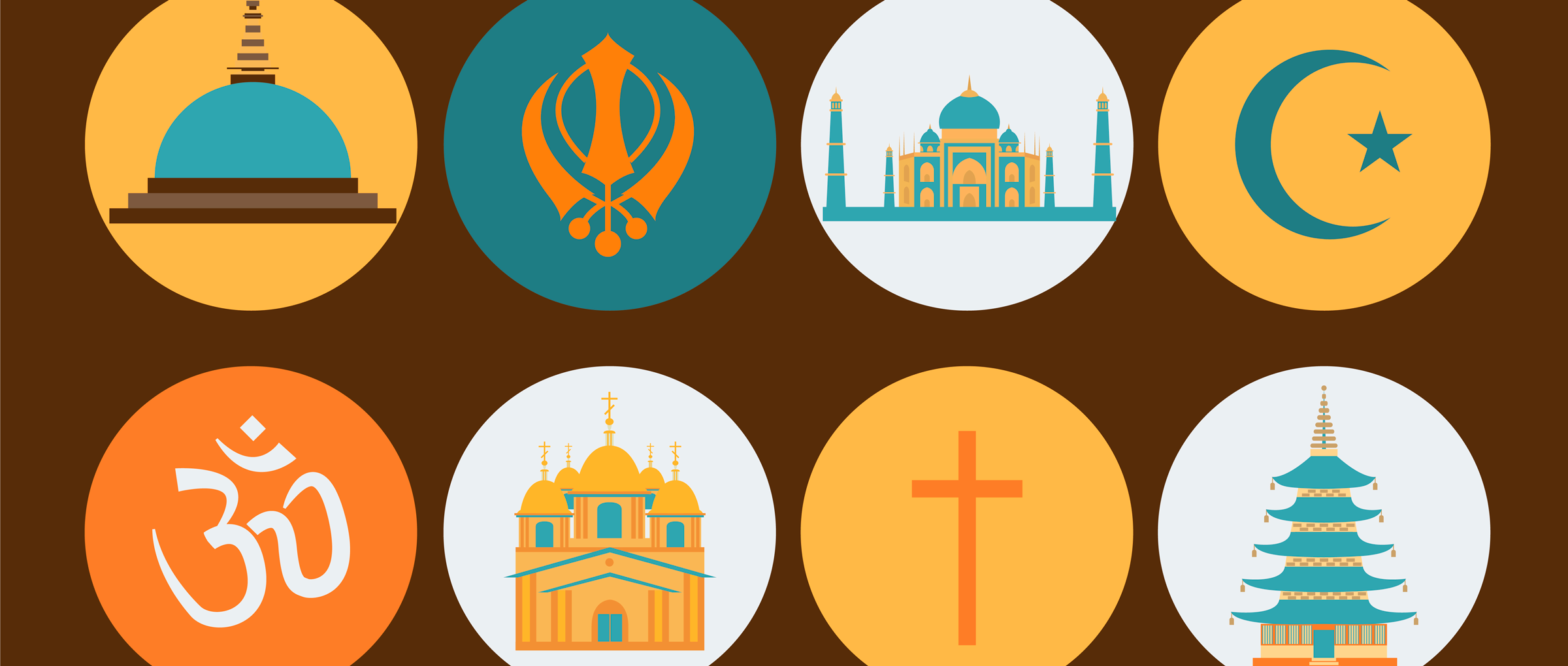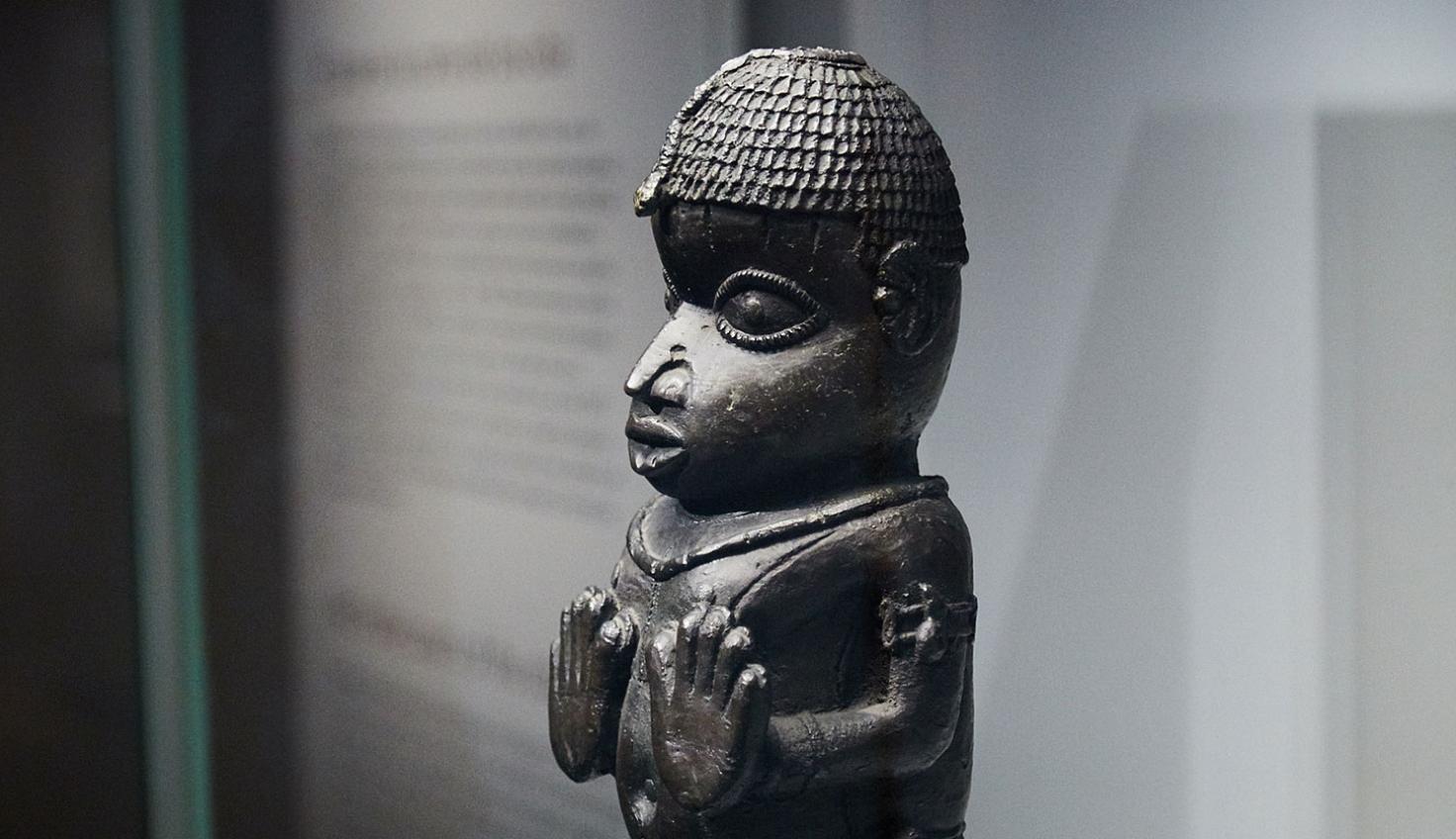Since humans originated in Africa about two million years ago, they have successfully spread throughout the world, adapting to different conditions, such as climate. The separate societies that arose on the planet were very different creating the Characteristics of Cultural Diversity that still exist today.

Characteristics of Cultural Diversity
Cultural diversity is the variety of cultures within a specific region or in the world as a whole. The degree of cultural diversity within a region or society can be derived from the degree of presence of people from different ethnic and cultural backgrounds. In addition to the notable cultural differences that exist, such as language, dress, and traditions, there is also significant diversity in the ways that societies organize themselves, in their shared values and norms, and in the ways that they interact with their environment. .
Cultural diversity is difficult to measure, but the number of languages spoken in a particular region or in the world is considered a good indication. This method indicates that there may be a period of global decline in cultural diversity.
David Crystal's research showed that, on average, a language is no longer used every two weeks. He calculated that if this trend of language disappearance continues, by 2100 more than 90% of the languages spoken today will be extinct. Overpopulation, immigration and imperialism are causes that could explain this decline.
What is cultural diversity?
Cultural diversity are the various aspects that different cultures particularly represent, such as language, traditions, gastronomy, religion, customs, family organization model, politics, among other characteristics of a group of human beings that inhabit a certain territory.
Cultural diversity is a concept created to understand the processes of differentiation between the various cultures that exist around the world. Multiple cultures form the so-called cultural identity of individuals or of a society; a "brand" that personalizes and differentiates members of a particular place from the rest of the world's population.
Diversity means multiplicity, variety and differences, an idea that is considered the complete opposite of uniformity. Currently, due to the process of colonization and cultural miscegenation among most of the nations of the planet, almost all countries have their cultural diversity, that is, a "piece" of the traditions and uses of several different cultures.
There are many separate communities in the world that differ significantly from each other. Many of them have maintained these differences to this day. There are cultural differences between people, such as language, clothing, and traditions. Even the organization of a society itself may differ significantly, for example in relation to morality or in relation to the environment. Cultural diversity can be considered analogous to biodiversity.
Some people consider globalization a danger for the preservation of the characteristics of cultural diversity, since they believe that it means the loss of the traditional and typical customs of each society, giving way to global and impersonal characteristics. Studies by many researchers conclude that the globalization process interferes with cultural diversity, since there is an intense economic and cultural exchange between countries, which often seek homogeneity.
In the face of the trend towards the standardization of social and cultural reference points induced by the globalization of trade and commodification, the preservation of cultural diversity is proving to be an important issue and amounts to considering
- that there is no single cultural model but rather a great diversity of cultures that have equal value and deserve equal respect
- that the recognition of this diversity is an essential condition for peace and dialogue among peoples.
“Cultural diversity represents […] like biological diversity, a rich reservoir of possibilities.” For this reason, "international institutions are now equipping themselves with a normative and legislative arsenal to promote cultural diversity." (Fabric Flipo)
Cultural Diversity Factors
By analogy with biodiversity, which is seen as a factor in the long-term existence of all life on earth, it can be argued that features of cultural diversity are vital to the long-term existence of humanity; and that the preservation of indigenous cultures can be important since it preserves the existence of species and ecosystems in general.
The UNESCO General Conference reached this conclusion in 2001 when it approved the provisions of article 1 of the Universal Declaration on Cultural Diversity, which states that “cultural diversity is necessary for humanity as biodiversity is necessary for nature”.
Some people dispute this claim for various reasons. First, like most evolutionary factors in human nature, the importance of cultural diversity to continued existence is an untested hypothesis that can neither be confirmed nor refuted. Second, it can be argued that it is unethical to maintain “less developed communities” as it deprives many of the people within them of the benefits of taking advantage of new technical and medical innovations used by the “developed” world.
Just as maintaining poverty in underdeveloped countries as "cultural diversity" is unethical, it is also unethical to preserve any religious practice simply because it is considered part of the characteristics of cultural diversity. Certain religious practices have been declared unethical by the World Health Organization and the United Nations, including female circumcision, polygamy, child marriage, and human sacrifice.
With the development of globalization, the historically established states have come under incredible pressure. In this age of evolving technology, information and capital are transcending geographic boundaries and reshaping relationships between markets, countries, and people. In particular, the development of the media has had a significant impact on people and communities around the world.
If there is any benefit, that openness negatively affects the identity of the communities. Given the rapid spread of information around the world, the meaning of culture, cultural values and styles is at risk of being averaged out. As a result, the degree of self-identification of the individual and the community may begin to weaken.
Some people, particularly those with strong religious convictions, supported the idea that it is in the interest of all people and all of humanity to maintain a certain model of community and certain aspects of that model. Currently, communication between various countries is becoming more and more intense. More and more students are choosing to study abroad to experience cultural diversity for themselves. His goal is to broaden his horizons and develop his personality through knowledge of life on other continents.
For example, according to Fengling, Chen, Du Yanyun, and Yu Ma, they argue that education in China is built primarily, as usual, on detailed interpretation of material and mechanical memorization. The traditional Chinese educational system is based on the desire that students perceive certain established contents.
In the classroom, Chinese teachers are carriers of knowledge and a symbol of power, students in China generally have a lot of respect for their teachers. On the other hand, in the educational system of the United States of America, American students see university professors as their peers. In addition, disputes with teachers are encouraged.
Free and open discussion on a wide variety of topics is characteristic of most American colleges and universities. The debate is the main difference between the educational systems of China and the United States of America. But we cannot say unequivocally which one is better, because each culture has its own advantages and characteristics. It is these differences and cultural diversity that make our world multicolored.
Students who study abroad, as long as they combine the positive aspects of two different cultures in their development, gain a competitive advantage for their careers in general. In particular, given the current process of economic globalization, people who have absorbed the experience of different cultures.
Cultural heritage
The Universal Declaration on Cultural Diversity, adopted by UNESCO in 2001, is a legal document that recognizes cultural diversity as the "common heritage of humanity" and considers its protection as an unavoidable and ethical commitment, which goes hand in hand with respect for to the human condition.
In addition to the Declaration of Principles adopted in 2003 at the Geneva Session of the World Summit on the Information Society (WSIS), the UNESCO Convention on the Protection and Promotion of the Diversity of Cultural Expressions, adopted in October 2005, is also a legally binding instrument that recognizes that:
- the special nature of cultural goods, services and activities is the basis of identity, values and semantic content;
- While cultural goods, services and activities are economically important, they are not just consumer goods that can be treated as traded.
The declaration states that "there is growing pressure on countries to give up their rights to apply their own cultural policies and any aspect of the cultural sector during the negotiations of international trade agreements." Currently, 116 member states, as well as the European Union, have ratified the Convention (except the US, Australia and Israel).
This non-binding legal instrument designed to regulate world trade has become an accurate indicator of European policy choices. In 2009, the Court of Justice of the European Communities supported a broad vision of culture, beyond cultural property through the protection of films or the objective of promoting previously recognized linguistic diversity.
It is also worth remembering the Convention for the Safeguarding of the Intangible Cultural Heritage, ratified on June 20, 2007 by 78 countries, which establishes: The intangible cultural heritage, which is transmitted from one generation to another, continually recreates communities and groups that are preserved under the influence of the environment in interaction with nature and history, and gives them a sense of identity and permanence, thus paying tribute to cultural diversity and human creativity.
Cultural diversity is also promoted by the 2007 Montreal Declaration and the European Union. The idea of a shared multicultural heritage encompasses several ideas that are not mutually exclusive. Apart from the linguistic difference, there are religious differences and traditions. In particular, the Agenda 21 plan for Cultural Development is the first world-class document that establishes the commitment of local and city authorities to develop culture and promote the preservation of the characteristics of cultural diversity.
Protection of cultural diversity
The protection of the characteristics of cultural diversity can have several meanings:
- The balance to be struck: that is, the idea of protecting cultural diversity through activities in favor of unprotected cultural minorities;
- Protection of cultural minorities in danger of extinction;
- Other cases when talking about "protecting culture" referring to the concept of "cultural exclusivity". This creates a connection between the social concept of culture and the concept inherent in its commercialization. Cultural exclusivity emphasizes the particularity of cultural goods and services, including those recognized by the European Union in the Declaration on Cultural Diversity.
The aim is to protect against so-called 'commodification', which is seen as detrimental to 'disadvantaged' cultures, to support their development through subsidies, incentives, etc., also known as 'cultural protectionism'. Such protection can be attributed to the "cultural rights" provisions that were attempted in the 1990s in Europe.
cultural uniformity
The characteristics of cultural diversity are presented as the antithesis of cultural uniformity. Some, including UNESCO, fear that cultural uniformity is being introduced. They provide the following evidence to support this argument:
- The disappearance of many languages and dialects, for example in France, which do not have legal status or state protection (Basque, Breton, Corsican, Occitan, Catalan, Alsatian, Flemish and others)
- the growing dominance of the culture of the United States of America through the distribution of its products in the form of movies, television programs, music, clothing and food, which are promoted through audio and video media, the goods of unified consumption of the world (pizzerias, restaurants, fast food, etc.).
There are several international organizations working to protect endangered communities and cultures, notably Survival International and UNESCO. The Universal Declaration on Cultural Diversity, adopted by UNESCO and endorsed by 185 participating countries in 2001, is the first encouraged international instrument designed to protect and promote cultural diversity and intercultural dialogue.
The European Commission's Sustainable Development in a Diverse World Network of Excellence (known as SUS DIV), in line with the UNESCO Declaration, aims to explore the relationship between cultural diversity and sustainable development.
Thomas Bauer sees no trend towards increasing cultural diversity in the world; As a result of the global processes of rationalization and secularization, he sees the loss of cultural diversity, languages and lifestyles as the predominant trend. Already in the 1920s, Stefan Zweig felt a "slight horror of the monotonous world". He saw the cause above all in the "means of mechanization of mankind...imported from the United States of America that offer pleasure without demanding effort."
The standardization of fashions, dances, hairstyles, movies, sports and forms of entertainment in everyday life, through which we became "colonies of your life (in America)", served as indicators. Similarly, even before the First World War, Walter Rathenau argued that the specialization and abstraction of the machine world had so shaped people's mental habitus that all areas of life were increasingly determined by a uniformity. .
cultural variabilities
There are a number of differences in the characteristics of cultural diversity despite the general uniformity of cultures. The ecological point of view is studied to understand the reality of these differences. The anthropologist, Marvin Harris, explains this:
The ecological point of view suggests that the climate, food and water supplies; and the presence or absence of threatening enemies influence the evolution of various cultural practices that help people adapt to the environment. Marvin Harris says that the way people produce food and other necessities explains the origin and development of cultural practices." The characteristics of cultural diversity and its elements are explained below:
Language
Anthropologists explain themselves about the different forms and symbols through social interaction despite being all Homo sapiens. Arabic is spoken in the Sanskrit of Arabia and in India and there is a great difference between their alphabets. Chinese and English in England have quite different alphabets and it is hard to imagine that users of these languages ever spoke a common language.
The times play a wonderful role in changing the social demands and social interaction of people who speak different languages. For example, in Indian Pakistan, Hindi or Urdu is spoken, but a thousand years ago, there was no trace of this language present there.
Dress
To protect people from the physical environment and weather conditions, the use of clothing is done in all cultures. Since the beginning, different cultures have been living in different climatic conditions and physical environments, therefore there is a variety of clothing. Furthermore, customs and religious beliefs also affect the style of dress in terms of color and design.
In India and Pakistan, due to the hot climate and Islamic beliefs, light cotton clothing is worn, covering the entire body. Shalwar and shirt for men, Shalwar suit with head covering (Dopatto) is worn by women, while in Switzerland due to very cold weather, people wear heavy woolen clothing consisting of coat, pants and hat or cap woolen.
family system
According to anthropologists, the family structure depends on economic sources such as the availability of food and other biological needs. The more sources, the larger the family size. For example, ancient tribes and nomadic agrarian societies had an extended family structure as part of the culture, while in modern urban and industrial societies, the single family structure is the folk family system.
Religion
Religion is an integral part of culture because the support of supernatural forces to lessen the danger of natural calamities is an integral part of human nature. Religion is, to get spiritual relief by establishing a connection with the creator (God). Therefore, each different culture has its religions and beliefs.
For example, in cultures of Islamic religion, the individual in society believes in the unity of God and the prophecy of the Prophet Muhammad as unique. In India, various gods and idols are worshipped. Rama is thought to be the apostle of God. In Japan, Mahatma Buddha is believed to be the redemption of mankind and is invoked for help and guidance.
Socialization
All cultures use education to pass on the culture to the next generation and harmonize the individuals in the society with their form of culture, but this form is different in each culture. According to Mead: "Cultural training teaches individuals aggression or submission or competition and resignation." The variety of knowledge, experiences and observations play an important role in making the effects different.
Customs
Each culture due to its individual festivals and beliefs has a way of celebrating religious rites, affected by the weather and society. Marriage, for example, is an important source of recreation and is a variety of many customs depending on different cultures.
Social norms
Social norms are constrained by the values, traditions and beliefs of a culture and are shaped differently due to the different structures and expectations of different cultures. Saying Salam is an Islamic social norm, while good morning is used to convey the same meaning in European culture. Similarly, in Islamic society, not drinking wine is a custom, while in European culture it is the opposite. Driving on the left is legal in the UK, but in Saudi Arabia it is illegal.
rituals and ceremonies
Rituals and ceremonies are an important source of transmission of culture and bring relief to society because the passion of participating in them imprints the effects of culture on minds. There are different rites due to the belief about nature and natural phenomena. Different religions have ceremonies and rites that are different and determine in many ways the cultural trends of the human group.
literature and arts
Literature and the arts are an important source to remember the epic and romantic incidents that occur in a culture and also to pass them on to the next generation. Art is an expression of the pride and skill of individuals in a society, but each culture has different experiences and observations.
sports and recreation
Sports and recreational activities keep people in a healthy and emotional society and are part of the culture. However, due to this tendency of individuals in a society and the difference in environment, different cultures have different games and sports.
In Pakistan, apart from Kabaddi, football, volleyball, cricket and fairs, circus, cinema, television and theater are popular entertainment. In Arab culture, horse racing, camel racing and arrow shooting are practiced, while in European culture, football, car racing, motor sports, clubs and cinema are more common sports and recreations. .
Economic activities
The economic sources and the natural environment determine the economic activities of a culture of a society. The activities of individuals are in accordance with the economy of society. A society that depends on the agricultural economy is called an agrarian society. A society that depends on the industrial economy is called an industrial society.
Political system
Wherever man has been (from nomadic society to industrial society), the political system has been part of his culture. They fought wars and died for it. However, the political system, while going through stages of evolution, has been different in structure from various cultures. In Saudi Arabia a monarchy, in Libya a dictatorship; in Great Britain and the United States the democratic presidency is in force.
Here are some links of interest:









